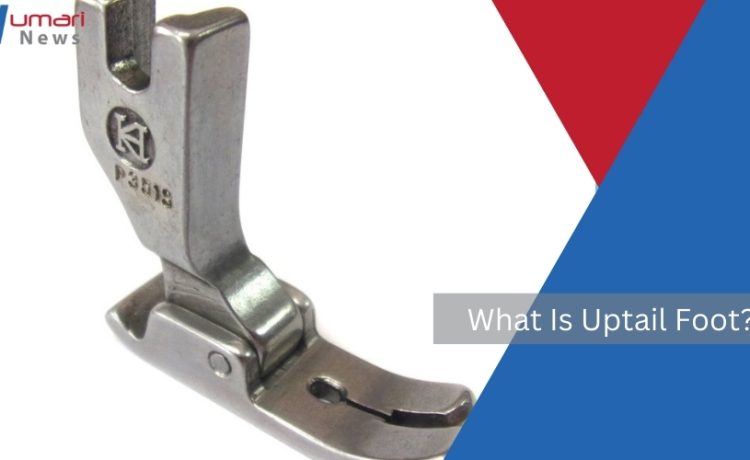Foot health is often overlooked until discomfort or pain becomes a problem. One condition that can significantly impact your daily activities is “uptail foot.” Although the term may sound unfamiliar, this condition can cause notable discomfort and even lead to issues in walking or running. This blog explores what uptail foot is, its symptoms, potential causes, treatment options, and preventive measures.
What Is Uptail Foot?
Uptail foot is a condition where the toes begin to curl upward due to the weakening or shortening of certain muscles and tendons. This abnormal positioning of the toes can lead to discomfort, particularly when engaging in activities like walking or running. The term “uptail” refers to the appearance of the foot, as the toes point slightly upward, resembling a tail. This condition can cause various symptoms ranging from mild discomfort to severe pain, affecting not only athletic performance but also day-to-day mobility.
Common Symptoms of Uptail Foot
The symptoms of uptail foot vary depending on the severity of the condition. However, there are several common signs to look out for:
- Toe Pain After Physical Activity: Many people experience pain in the ball of the foot or the base of the toes, especially after activities such as running or long walks. This pain is often more noticeable when the muscles are strained.
- Metatarsalgia: Metatarsalgia is a condition characterized by pain and inflammation in the ball of the foot, often triggered by overuse or pressure. It can feel like there’s a pebble in your shoe, leading to constant discomfort.
- Floppy Toes: When the muscles that stabilize the toes weaken, the toes can become “floppy,” making it difficult to maintain proper foot alignment. This can lead to instability when walking.
- Footpad Pain: People who do a lot of walking—particularly in urban areas where the terrain may be hard—may experience pain in the footpad due to inadequate cushioning, which is worsened by uptail foot.
Causes of Uptail Foot
Uptail foot can develop due to a variety of reasons, which include:
- Improper Footwear: One of the main causes of uptail foot is wearing shoes that do not provide adequate support, such as high heels or shoes without proper arch support. Prolonged use of ill-fitting shoes can place extra strain on the foot muscles and tendons, causing them to weaken over time.
- Repetitive Strain: Athletes, especially runners, are prone to uptail foot due to the repetitive strain placed on the foot during activities. The continuous pressure on the ball of the foot can lead to inflammation and muscle fatigue, resulting in the characteristic upward curl of the toes.
- Genetics: Some people are more prone to developing foot issues because of genetic factors. The shape of their feet or the way they walk can place them at higher risk of uptail foot.
How to Diagnose Uptail Foot
If you experience symptoms of uptail foot, it is essential to seek a professional evaluation. Here are some common methods used by specialists to diagnose the condition:
- Physical Examination: A doctor will assess the alignment of your toes and identify any abnormalities that may be contributing to the symptoms.
- Imaging: X-rays or other imaging methods may be used to determine if the bones in the foot have changed in position or if there are other underlying issues that need to be addressed.
- Gait Analysis: Observing how you walk can help a specialist determine if there are any imbalances contributing to the condition. Gait analysis is often performed to understand how different parts of the foot are impacted during movement.
Effective Treatments for Uptail Foot
Treating uptail foot can involve a variety of interventions, ranging from simple lifestyle changes to medical treatments:
- Metatarsal Ball of Foot Pads: Special pads can be placed inside the shoe to provide extra cushioning to the ball of the foot, which helps reduce pain and improve comfort. These pads help redistribute pressure, alleviating stress on the affected area.
- Footwear Modifications: Switching to supportive shoes with a wider toe box and good arch support is crucial. Shoes that have proper cushioning, particularly in the forefoot area, can help mitigate the symptoms of uptail foot.
- Physical Therapy: Exercises and stretches that focus on strengthening the muscles in the feet can be very effective in treating uptail foot. Physical therapists often recommend exercises like toe curls, resistance training, and foot stretches to improve muscle balance and alleviate pain.
- Orthotic Inserts: Custom-made orthotic inserts can help correct foot mechanics and provide additional support, which is particularly beneficial for people who experience discomfort while walking or running.
- Surgery: In severe cases where conservative treatments fail to provide relief, surgery may be necessary to correct the deformity. Surgical intervention typically involves adjusting the alignment of the bones or tendons in the foot to restore normal positioning.
Preventive Measures
Prevention is always better than treatment, and there are steps you can take to avoid developing uptail foot:
- Wear Proper Footwear: Invest in shoes that have good arch support and a wide toe box. Shoes designed to provide adequate cushioning can reduce the risk of developing uptail foot and other foot-related issues.
- Take Breaks: If you’re on your feet for extended periods, be sure to take breaks to rest your feet. This will help alleviate pressure and prevent muscle fatigue.
- Regular Foot Stretches: Simple stretches, such as flexing and extending your toes, can help maintain muscle flexibility and strength. Regular stretching is particularly important for individuals who are prone to foot problems or who engage in high-impact activities.
- Listen to Your Body: Foot pain should never be ignored. If you begin to experience discomfort, seek early intervention to prevent more serious issues from developing.
Uptail foot is a condition that can significantly impact your quality of life, particularly if you are someone who loves physical activity. Understanding the symptoms, causes, and available treatments can help you manage and even prevent the condition from worsening. By wearing proper footwear, practicing preventive measures, and seeking timely medical intervention, you can reduce the risk of experiencing the discomfort associated with uptail foot.
If you are experiencing symptoms like toe pain or footpad discomfort, it’s crucial to consult with a specialist. Early diagnosis and intervention are key to managing uptail foot effectively, ensuring that you can continue to lead an active and pain-free lifestyle.







